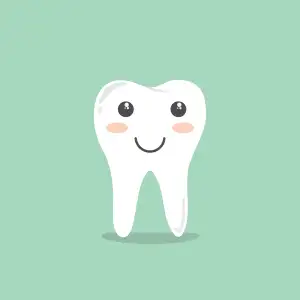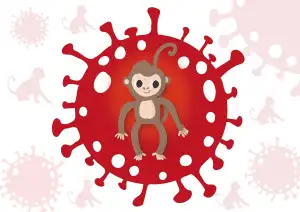Master Your Swing and Say Goodbye to Golf Calluses: Essential Health Tips for Golfers

- Causes of Golf Callus: Exploring the Factors Behind its Development
- Symptoms and Signs: Identifying Golf Callus on the Hands and Feet
- Prevention Techniques: Tips to Avoid Golf Callus Formation
- Treatment Options: How to Alleviate Discomfort and Promote Healing
- Proper Hand and Foot Care: Essential Practices for Golfers
- When to Seek Medical Attention: Recognizing Severe Cases of Golf Callus
Golf callus is a common condition that affects many golfers. It is characterized by the formation of hardened and thickened skin on the hands and feet, particularly in areas that are subjected to repetitive friction and pressure during golf swings. This condition can be uncomfortable and even painful, affecting a golfer's performance on the course. Understanding the causes, symptoms, prevention techniques, and treatment options for golf callus is essential for maintaining optimal skin health and enjoying a pain-free game of golf.
Causes of Golf Callus: Exploring the Factors Behind its Development
Golf callus, also known as golfer's callus, is a common condition among golfers that results from repeated friction and pressure on the hands and feet. The main cause of golf callus is the repetitive swinging motion involved in golf, which leads to constant rubbing and irritation. Additionally, gripping the club tightly can contribute to the development of calluses.
Other factors that can contribute to the formation of golf callus include improper grip technique, using worn-out or ill-fitting gloves, playing on rough or uneven surfaces, and not wearing proper footwear. These factors increase the amount of friction and pressure experienced by the hands and feet during a game of golf.
It's important for golfers to be aware of these causes in order to take preventive measures. By understanding how these factors contribute to callus development, golfers can make necessary adjustments to their technique and equipment to minimize friction and pressure on their skin.
Symptoms and Signs: Identifying Golf Callus on the Hands and Feet
Symptoms of golf callus on the hands and feet include thickened, rough, and hardened skin. The affected areas may appear yellowish or grayish in color. Pain or tenderness may be experienced when pressure is applied to the callused area. Cracks or fissures can also develop, leading to discomfort and potential infection. It is important to recognize these signs early on to prevent further complications.
Prevention Techniques: Tips to Avoid Golf Callus Formation
To prevent golf callus formation, it is essential to take proactive measures. First and foremost, ensure that you have the correct grip size for your golf clubs. Ill-fitting grips can lead to excessive friction and pressure on your hands, increasing the likelihood of calluses.
Additionally, make sure to wear proper golf gloves that fit well and provide adequate cushioning. These gloves will help reduce friction and protect your hands from developing calluses.
Another important prevention technique is to maintain good hand hygiene. Regularly washing your hands with mild soap and warm water can help remove dirt and sweat that can contribute to callus formation.
Furthermore, consider using moisturizers or creams specifically designed for golfers' hands. These products can help keep your skin hydrated and supple, reducing the risk of calluses.
Lastly, it is crucial to practice proper swing technique. Seek guidance from a golf professional who can teach you how to grip the club correctly and execute a smooth swing motion. This will minimize unnecessary pressure on your hands and feet, preventing callus development.
By implementing these prevention techniques into your golf routine, you can significantly reduce the chances of developing painful calluses and enjoy a more comfortable game.
Treatment Options: How to Alleviate Discomfort and Promote Healing
When it comes to treating golf calluses, there are several options available. One of the most effective methods is regular exfoliation using a pumice stone or a foot file. Gently rub the affected area in circular motions to remove dead skin cells and promote healing.
Moisturizing the skin is also crucial in relieving discomfort. Apply a thick moisturizer or petroleum jelly to the callused areas after exfoliation. This will help soften the skin and prevent further dryness.
For painful calluses, over-the-counter creams containing salicylic acid can be used. These creams help break down the thickened skin and reduce pain. However, it's important to follow the instructions carefully and avoid applying them on open wounds or sensitive areas.
In some cases, wearing protective padding or bandages can provide relief by reducing friction and pressure on the calluses. Silicone gel pads are particularly effective as they cushion the affected areas while allowing for continued movement.
If home remedies do not provide sufficient relief, consult a healthcare professional who may recommend prescription-strength creams or ointments. In severe cases, medical procedures such as cryotherapy or surgical removal may be necessary.
Remember, treating golf calluses requires patience and consistency. Regularly following these treatment options will not only alleviate discomfort but also promote healing for healthier hands and feet on the golf course.
Proper Hand and Foot Care: Essential Practices for Golfers
Proper hand and foot care is crucial for golfers to prevent the development of golf callus. Start by regularly moisturizing your hands and feet to keep the skin hydrated and supple. Use a thick, emollient cream or lotion that contains ingredients like shea butter or lanolin.
Additionally, it's important to wear gloves while playing golf to minimize friction and reduce the risk of callus formation. Choose gloves that fit well and provide adequate padding in areas prone to calluses, such as the palms and fingers.
When it comes to foot care, make sure to wear comfortable shoes that fit properly. Ill-fitting shoes can cause excessive rubbing and pressure on certain areas of the feet, leading to callus formation. Consider using cushioned insoles or orthotic inserts for added support.
Regularly exfoliate your hands and feet using a gentle scrub or pumice stone to remove dead skin cells and prevent calluses from becoming too thick. Be careful not to overdo it, as excessive exfoliation can cause irritation.
Lastly, maintain good hygiene by keeping your hands and feet clean at all times. Wash them thoroughly with warm water and mild soap after each round of golf. Dry them gently but thoroughly, paying attention to the spaces between your fingers and toes.
By following these essential practices for hand and foot care, you can minimize the occurrence of golf callus and enjoy a more comfortable golfing experience.
When to Seek Medical Attention: Recognizing Severe Cases of Golf Callus
While most cases of golf callus can be managed with proper care and prevention techniques, there are instances where medical attention may be necessary. If you notice any of the following signs, it is important to consult a healthcare professional:
1. Persistent pain or discomfort: If your golf callus continues to cause pain or discomfort despite home remedies and treatment options, it may indicate a more serious underlying issue.
2. Infection: If your golf callus becomes red, swollen, warm to the touch, or starts oozing pus, it could be a sign of infection. Seek medical attention promptly to prevent further complications.
3. Difficulty in movement: If your golf callus restricts your range of motion or makes it difficult for you to perform everyday activities, it is advisable to seek medical advice.
Remember, early intervention can help prevent complications and promote faster healing. Don't hesitate to reach out to a healthcare professional if you have concerns about the severity or progression of your golf callus.
In conclusion, taking care of your skin is crucial for golfers to prevent the development of golf callus. By implementing simple prevention techniques such as wearing well-fitted gloves and using proper grip techniques, you can minimize the risk of callus formation. Additionally, practicing good hand and foot care, including regular moisturizing and exfoliation, will help keep your skin healthy and free from calluses.
Remember to pay attention to any signs or symptoms of golf callus and seek medical attention if necessary. By prioritizing your skin health, you can continue to enjoy the game without discomfort or hindrance. So, let's master our swing while saying goodbye to golf calluses by embracing these essential healthy habits!
Published: 24. 01. 2024
Category: Health



